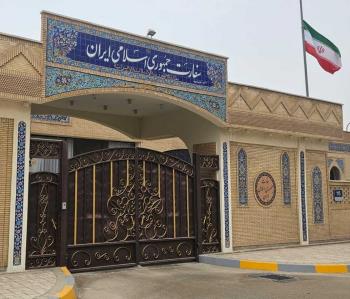Alwaght- Taiwan’s ministry of defense reportedly has seeks to purchase US tanks, air-defense systems, and anti-tank missiles worth of $2 billion.
In the middle of the trade war between the US and China and also tensions in the South China Sea, the question is that what policy is Washington applying in dealing with Beijing and Taipei and what does Trump seek behind it?
Taiwan in the US foreign policy
After a Pentagon report on the Chinese missile threats, the US Senate in 2000 approved the Taiwan Security Enhancement Act, or TSEA. At the time, in which such figures as John Bolton who is now national security advisor were influencers in the foreign policy, the incumbent President George Bush brazenly expressed what the US thought about China, saying that Beijing was a “strategic rival” to Washington, opening the door to massive arms sales to Taiwan.
In 2003, the year the US felt it needs China in its so-called fight against terrorism, the Bush administration softened its tone with Beijing. Since then, and during the Obama presidency, the Americans mainly chose to avoid adopting a confrontational policy towards China, either officially or unofficially. Still, Washington continued to strengthen its ally Taipei militarily by supplying it with arms. Since 2010, the US provided Taiwan with weapons worth of $15 billion.
In his national security document, issued in 2017, the US President Donald Trump highlighted respect to the “one China’ policy in response to the Taiwanese seeking of independence. But his foreign policy follows a path of “strategic ambiguity” in favor of Taiwan and the US relations and interests. So, Trump has followed the policy of first two years of Bush administration which is by the way influenced by Bolton, with the difference that at the present time Trump does not feel a need to China as much as before in the fight against terrorism. Trump, using the TSEA and a 1979 act, boosts Taiwan militarily. But the policy has in its nature an aggressive aspect. He tries, in an unofficial plan, to add Taiwan to a network of the US allies in the Oceania region.
When a couple of months ago the Chinese leader Xi Jinping did not rule out the use of force to take control of Taiwan as a Chinese territory, the US saw the opportunity ripe to deepen its influence in the Strait of Taiwan. The US naval vessels over the past six months at least two times sailed through the Strait of Taiwan. The Chinese Defense Minister Wei Fenghe in a bitter tone vowed to go to war if a party seeks to separate Taiwan from China.
The Taiwanese list of arms asked for contains 66 F-16 fighter jets, 108 Abrams tanks, and a large number of anti-tank launchers and missiles, apparently, if delivered, will offer Taipei a stronger deterrence in the face of possible Chinese air and ground attacks.
Taiwan in the trade war
In 2016, Tsai Ing-wen, the leader of the Democratic Progressive Party (DPP) became the president of Taiwan. The party worked hard towards independence but last year, the rival party Kuomintang, which holds a better relationship with Beijing, won the local elections. The party is expected to win the presidential race of 2020. So, the remaining single year provides Trump with the biggest chance to press China using the Taiwan case. Along with the news of Taiwanese arms demand, Trump, during a Paris visit said that he will impose tariffs on $300 billion Chinese goods imported to the US.
Using the trade war, Trump seeks two aims with a single shot. First, since 1998, Beijing encouraged Taiwanese investors to invest in the Chinese economy. Since then, Taiwan’s private sector massively invested in China. This reduced the Taiwanese economic reliance on the US in favor of China. Taiwan with $5.5 billion is the third-largest foreign investor in the Chinese economy. The Chinese leaders use the economic instrument to force the US away from Taiwan. Whenever tensions escalate in the South China Sea, the Taiwanese private sector grows serious concerns about the possible economic crash. This anxiety presses the local government and the US for backing off.
The US-China war has damaged the Chinese-Taiwanese trade relations, making the cheap Chinese market insecure for the Taiwanese manufacturers. Over the past two years, Taiwan’s investment in China market dropped considerably. Trump pursues a policy of signing bilateral trade deals with the Trans-Pacific states instead of signing the collective Trans-Pacific Trade Agreement which is aimed at curbing further Chinese economic domination. So by the trade war, the US president also seeks to weaken China-Taiwan business ties to pave the way for a free trade deal with Taipei.
Second, pressuring China using Taiwan. Aware of the fact that Taiwan is China’s red line, Trump after assuming the power at the White House in an unprecedented move held a phone conversation with the Taiwanese president. The measure is deemed a violation of One China policy and the 1979 act. Peter Navarro, a US economist who currently serves as assistant to the president and Director of Trade and Manufacturing Policy in the Trump administration, has recently talked about adopting a tougher policy on China and bolstering Taiwan militarily. The coincidence of the trade war, Taiwan demand for arms, and increasing US presence around China provide proof to the US policy of pressuring China to extract concessions. But with regard to the possible changes in Taiwan’s politics and lack of valid Trump economic guarantees, Taiwan will very likely see its vital interests critically endangered. Teng Chong Chian, a professor at the National Chengchi University of Taiwan, calls this the Trump “nasty dream” for Taiwan.



























